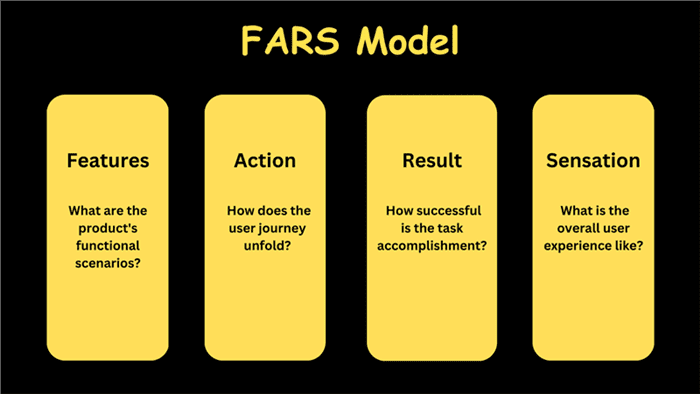The Role of Customer Feedback in Startup Success

The Role of Customer Feedback in Startup Success
Hey everyone, it’s Morgan.
As a founder of a startup, I understand that customer feedback is crucial for success, especially for products like Gemoo that are developed based on MVP mode. The feedback from users determines the direction of its development, including its features and which group it serves, instead of being determined by me or my team. Therefore, it is essential to collect real user feedback effectively.
Customer Feedback Collection✨
Here are some common methods used to collect customer feedback and their benefits:
- Regularly survey users to collect feedback on product usage via questionnaires or interviews. This helps us understand how customers use the product and prioritize what new features to develop.
- Establish a customer feedback system to track and analyze customer feedback. Use UMS if your team is large enough, or third-party tools like Notion if your team is small. This will help you understand customer sentiment in real-time and identify trends over time, enabling better product development and customer experience decisions.
- Develop a customer feedback culture within the team to encourage continuous improvement: The entire team should be involved in collecting and processing customer feedback.
- Create a group or community for customer feedback, like Slack or Reddit, to encourage user participation and targeted marketing activities. This can help generate more feedback and ideas for improving the product.

Customer Feedback
We all know that customer feedback is crucial for the success of startups, wisely taking advantage of customer feedback could help startups identify what’s your differentiation and competitive advantages and then accurately position themselves.
😫 But it is not easy for startup teams to obtain authentic user feedback. I believe the main difficulties are concentrated in the following four aspects:
- Inability to uncover the needs of target users: Current user research often has a single dimension, and it is unclear what unique characteristics users have, how to reach them, what specific questions to ask, how to improve response rates, and how to use this data to improve the product experience.
- Inability to collect user feedback effectively: As the channels for users to provide feedback on products become increasingly diverse, non-information-based methods of collecting feedback can easily lead to “distortion” of data quality. At the same time, the “after-the-fact recollection” style of research data collection means that users have forgotten much of the actual experience when they fill out the survey.
- Inability to monitor end-to-end experience effectively: Due to the common problem of limited manpower in startup teams, user research can be time-consuming and slow. As a result, for experience feedback that requires high real-time data, the optimal action time may have already been missed by the time the data is obtained.
- Inability to form a closed loop of experience actions: After development members obtain data, there is a lack of initial motivation to push forward subsequent actions. The results of user experience are difficult to use effectively.
Recently, I just learned about an interesting product experience model that helps overcome these four problems. It is called the FARS model (learn from CxHub).
FARS Model 👨💻
The FARS model starts from the three dimensions of “business, user, and experience.”
The corresponding relationships for the three dimensions are:
- Business → Functionality
- User → behavior,
- Experience → results & feelings.

FARS Model
The model reconstructs the user’s journey of using the product in a specific scenario and infers the value that the product brings to the user from the final task results and feelings.
The FARS model suggests a practical approach to business development. First, develop a plan based on the functionality of the product. Next, clearly understand your users and identify the scenarios that lead to their needs based on their behavior. Design strategies that match the user’s path of using the product, such as the “delivery of users, display pages, pop-up timing, and pop-up strategy.”
Then, establish a dialogue relationship with users who meet specific conditions, and use the “experience survey questionnaire” to obtain users’ attitudes, feelings, and even the underlying reasons behind their needs.
This is the practical approach of the FARS model.
Illustration Example 🧩
Taking my product Gemoo’s “Record Screen” function as an example, the operation is divided into the following three steps.
Step 1: Scenario questionnaire design
The product experience survey of the “Record Video” function in Gemoo, needs to be designed from the perspectives of results, experience, and future improvement. The questions are:
- What do you think the speed of starting the Gemoo recording video function is? (Very slow → Very fast)
- Are you satisfied with the quality of the recorded video? (Very dissatisfied → Very satisfied)
- Are you satisfied with the process of using the recording video function? (Very dissatisfied → Very satisfied)
- What do you think we can improve? (Open-ended, optional)
Step 2: Deployment Settings
After designing the questionnaire, the next step is to make the questionnaire appear on specific pages for the target users. Deployment settings: only users who have used the “video recording” scene will be the research objects.
Research users triggered by the scene have fresh and authentic memories of using the product. They are basically included in the research scope only when they pass through a specific scene in the usage path. This ensures that the research is centered around specific scenes, and also has credibility in terms of data quality.
We limit the deployed users to newly registered users in 2023. They will trigger the questionnaire to pop up on the results page after completing their first video recording. This timely research makes it easier for users to perceive the development team’s concern for user feedback, naturally increasing user enthusiasm. Feedback on issues is closer to the truth and more targeted.
Step 3: Real-time Collection of User Experience Data
Real-time collection of user feedback can be approached from the perspective of individual users or the entire user base (in cases where a specific group of users is targeted), analyzing the user’s feedback on product functionality. When there are doubts about user attitudes, preferences, or feelings within our team, we can use this to gain insight into the user’s true thoughts. Based on the results of product scenario research, provides persuasive quantitative evidence for relevant product strategy adjustments.
Closed Loop 📣
After collecting good experience data, there also needs to be a mechanism that allows insights and actions to form a good cycle. Leveraging the FARS model is not just about gaining the ability to think and diagnose in a framework, but we also need to establish an “experience -> feedback -> improvement -> tracking” closed-loop action to achieve targeted product optimization.
The above is some experience sharing I have recently gained in collecting and utilizing user feedback, Thank you for reading.
Hope to hear from you, let’s embrace the power of user feedback and work towards building better products together! 🍻



